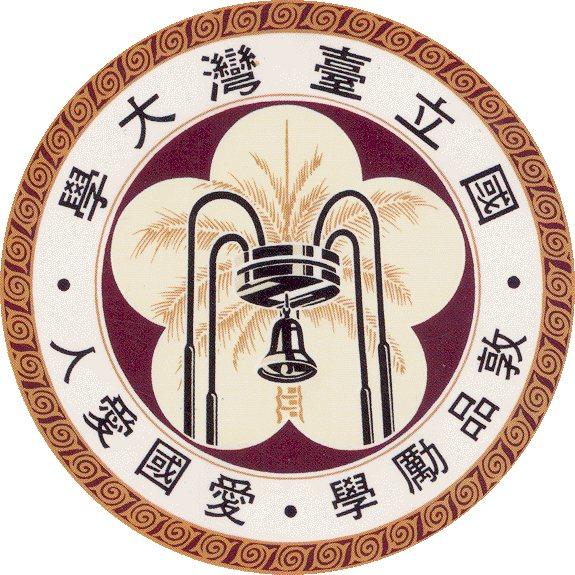Team:NTU-Taida/Human practice/Collaboration
From 2013.igem.org
(Created page with "{{:Team:NTU-Taida/Templates/Header}}{{:Team:NTU-Taida/Templates/Navbar}}{{:Team:NTU-Taida/Templates/Sidebar|Title=Collaboration}}{{:Team:NTU-Taida/Templates/ContentStart}} {{:...") |
|||
| Line 1: | Line 1: | ||
{{:Team:NTU-Taida/Templates/Header}}{{:Team:NTU-Taida/Templates/Navbar}}{{:Team:NTU-Taida/Templates/Sidebar|Title=Collaboration}}{{:Team:NTU-Taida/Templates/ContentStart}} | {{:Team:NTU-Taida/Templates/Header}}{{:Team:NTU-Taida/Templates/Navbar}}{{:Team:NTU-Taida/Templates/Sidebar|Title=Collaboration}}{{:Team:NTU-Taida/Templates/ContentStart}} | ||
| + | It has just been the second year for NTU_Taida to participate in iGEM, therefore we have been enjoying cooperation with iGEM teams in our country. | ||
| + | |||
| + | ==Cooperation with NYMU== | ||
| + | |||
| + | We asked NYMU_Taipei to test functional results of our biosensor ACE &CEA (BBa_K1157020 & BBa_K1157021 ). They use ELISA plate reader to read the GFP intensity through time. On the other hand, we tested NYMU_Taipei team’s promoter (BBa_K1104242)activity expressed in bacterial strain E. Coli M1655. (See results/protocals for further details) | ||
| + | #Photo 1 | ||
| + | |||
| + | Apart from functional assay testing, we also discussed about optimizing our functional results. We shared our opinions about data collection time intervals and incubation conditions. We concluded that 8-hour functional tests are better than 4-hour functional tests, but there will be no obvious difference as soon as fluorescence reaches intensity plateau. | ||
| + | #Photo 2 | ||
| + | |||
| + | ==Cooperation with NTU_Taiwan== | ||
| + | |||
| + | As a new member of igem, NTU_Taiwan has been a helpful partner to cooperate with. They supported us with our construct of pConst-RBS-CinR-tt (though we weren’t able to submit that part in time) and we supported them for functional testing. | ||
| + | |||
| + | We performed western blotting to test the protein expression level of pRS424-Gal1 SrUCP-TAP (experimental group) and pRS424-Gal1 TAP (control group). These proteins are expressed in Sacchromyces for 0/2/4/6/8/20 hours. We used 10% SDS gel to undergo electrophoresis for 40 minutes, 180 V (each well with 6μl loaded). Then we use 80mA, 70 minutes to transfer. Finally, we use milk blotting to operate antibody staining. | ||
| + | #Photo 3 | ||
| + | #Photo 4 | ||
{{:Team:NTU-Taida/Templates/ContentEnd}}{{:Team:NTU-Taida/Templates/Footer|ActiveNavbar=Human Practice}} | {{:Team:NTU-Taida/Templates/ContentEnd}}{{:Team:NTU-Taida/Templates/Footer|ActiveNavbar=Human Practice}} | ||
Revision as of 01:23, 26 September 2013
It has just been the second year for NTU_Taida to participate in iGEM, therefore we have been enjoying cooperation with iGEM teams in our country.
Cooperation with NYMU
We asked NYMU_Taipei to test functional results of our biosensor ACE &CEA (BBa_K1157020 & BBa_K1157021 ). They use ELISA plate reader to read the GFP intensity through time. On the other hand, we tested NYMU_Taipei team’s promoter (BBa_K1104242)activity expressed in bacterial strain E. Coli M1655. (See results/protocals for further details)
- Photo 1
Apart from functional assay testing, we also discussed about optimizing our functional results. We shared our opinions about data collection time intervals and incubation conditions. We concluded that 8-hour functional tests are better than 4-hour functional tests, but there will be no obvious difference as soon as fluorescence reaches intensity plateau.
- Photo 2
Cooperation with NTU_Taiwan
As a new member of igem, NTU_Taiwan has been a helpful partner to cooperate with. They supported us with our construct of pConst-RBS-CinR-tt (though we weren’t able to submit that part in time) and we supported them for functional testing.
We performed western blotting to test the protein expression level of pRS424-Gal1 SrUCP-TAP (experimental group) and pRS424-Gal1 TAP (control group). These proteins are expressed in Sacchromyces for 0/2/4/6/8/20 hours. We used 10% SDS gel to undergo electrophoresis for 40 minutes, 180 V (each well with 6μl loaded). Then we use 80mA, 70 minutes to transfer. Finally, we use milk blotting to operate antibody staining.
- Photo 3
- Photo 4
 "
"


